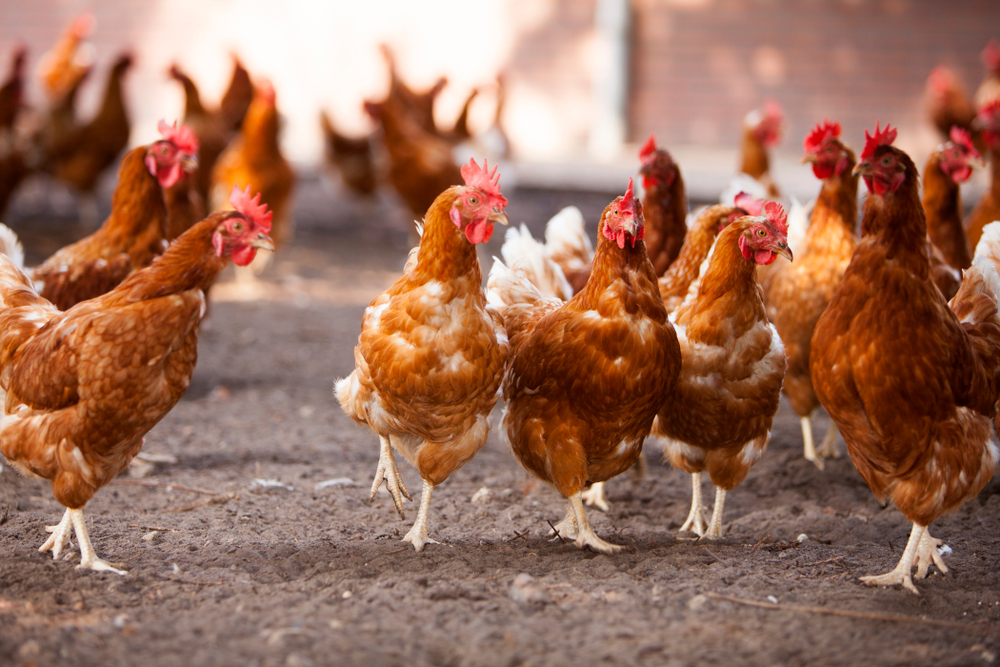Improving animal health with sensor noses (OBSeRVeD)
Poultry is the largest source of animal protein for human consumption and essential to feed the world's growing population. In intensive poultry farming, such as in the Netherlands, large-scale operations and high...
Centre of Expertise Digital Operations & Finance

Poultry is the largest source of animal protein for human consumption and essential to feed the world's growing population. In intensive poultry farming, such as in the Netherlands, large-scale operations and high demands for production efficiency make animals highly vulnerable to infections. Infection risk is also increased by societal calls for more sustainable and animal-friendly poultry farming with reduced use of antimicrobials in animal feed, more poultry with access to outdoor runs and changes to organic and more circular feed concepts. To enable the transition to a sustainable form of (poultry) farming, the consortium OBSeRVeD (Odour Based Selective Recognition of Veterinary Diseases) is researching new odour-based methods to improve the health of livestock.
Research purpose
With early detection and rapid(er) interventions, infections and thus widespread health problems can be better controlled. Therefore, this research project focuses on two objectives. The first is to study volatile biomarkers in relation to reduced health of poultry. The second objective is to develop a sensor platform for the detection of these Volatile Organic Compounds (VOC).
Research
One way to create an early detection system is based on the Volatile Organic Compounds (VOC) generated by pests and infections or bacterial imbalances at gut level.
This project investigates how these VOC can be used as biomarkers for early detection. To achieve this, the relationship between VOC and diseases will be studied. Two specific cases are addressed: intestinal dysfunction and its relationship with feed and intestinal pathogens, and mite infections.
At the same time, a compact and economically viable electronic nose system that can detect low concentrations of VOC is being developed. This development requires fundamental research in device physics, chemistry and data science.
With the microfabrication lab, the Smart Sensor Systems research group will focus on developing the sensor technology itself, including using a micro-ring resonator. It will also work on advanced data analysis techniques and machine learning to test and further develop the functioning of the electronic nose.
Collaborating partners
The consortium consists of coordinator Saxion University of Applied Sciences (Applied Nanotechnology and Ambient Intelligence), The Hague University of Applied Sciences (Smart Sensor Systems), Wageningen Research Foundation, Utrecht University, University of Twente, Wageningen University & Research, Radboud University Nijmegen, Delft University of Technology, Fontys University of Applied Sciences, VSParticle BV, Bronkhorst Hightech BV, LioniX International BV, NXP -Semiconductor Netherlands BV, Van Eck Bedrijfshygiëne B.V, Applied Nanolayers BV, GVP-Emmen, Springmountain BV, QL Polymer, Connecting Agri and Food, De Heus B.V., Royal GD, VAA Dataworks, Radisurf, World Veterinary Poultry Association, Royal Dutch Society for Veterinary Medicine (KNMvD), AVINED, Philips.
Intended duration of the project
October 2022 until October 2026
Study programmes involved
Applied Data Science & Artificial Intelligence
Finance
This project is funded by NWO through National Science Agenda Research on Routes by Consortia (NWA-ORC). This Research project falls within the Measurement and Detection route, and specifically under the sub-theme 'Bringing the lab to the situation'.
Media
Also take a look at the website of Saxion coordinator.
Project leader
Dr Jeanette Prinz, Lecturer/Researcher Data Science, [email protected]
Team
Dr Lodewijk Arntzen, Lecturer/Researcher Applied Physics - Nanotechnology,
Derek Land, Lecturer/Researcher Applied Physics, [email protected]